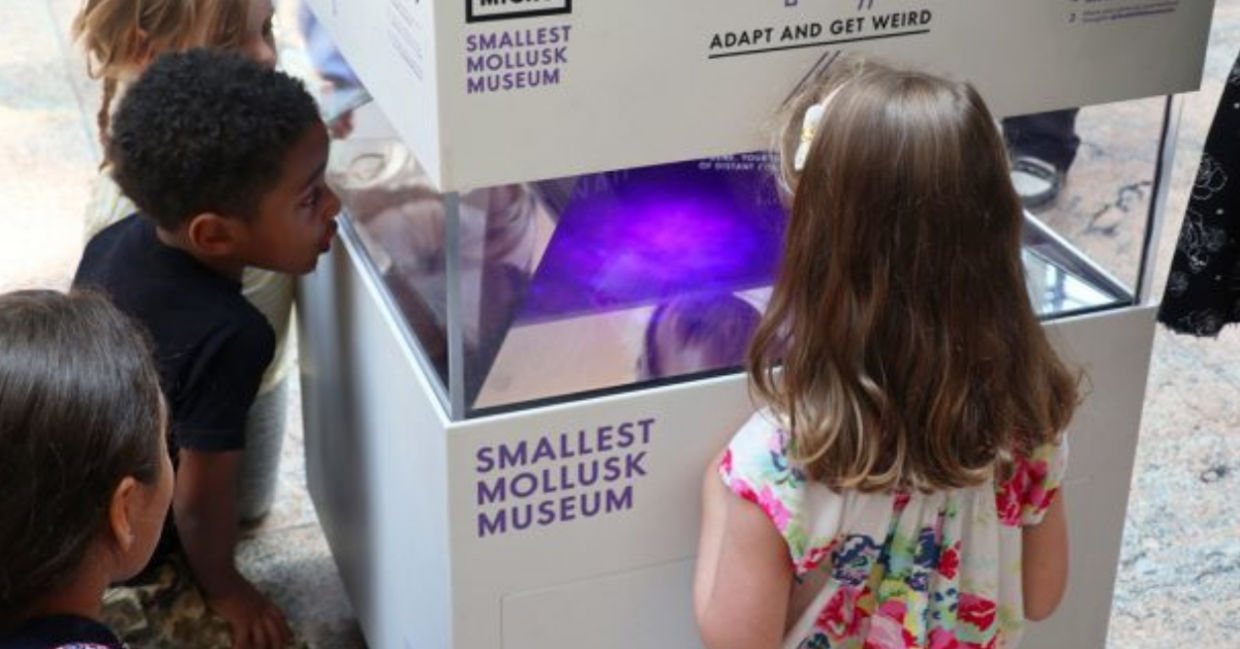
The holographic aquarium in MICRO's Smallest Mollusk Museum. (Courtesy of Micro/Ricardo Monge)
Science museums are amazing. You can see dinosaur bones from the giant creatures who were extinct eons ago or fly to the moon in a space mission simulator. You can take a look at cells under a microscope or learn to think like an engineer by building a prototype.
You can learn so much at a science museum if you live close enough to one to visit on family outings or school trips. In fact, 12 of the 20 most visited museums in the US are science museums according to USA Today.
If you don't live in or near a large city, you may not get a chance to visit a science museum or any museum. So, while the content is vitally important, their impact is limited. There just aren't enough science museums, said Charles Philipp, one of the founders of MICRO, “and with the high costs required to run conventional museums, it’s unlikely that we’ll be seeing a bunch of new traditional science museums popping up all over the country anytime soon."
Phillip and Schochet are committed to bringing science education to people anywhere and everywhere because they believe that access to high-quality science is empowering.
Phillip and his partner Amanda Schochet decided to reinvent science museums by micro-sizing them. They launched MICRO, a nonprofit organization that builds tiny 6 ft tall -- about the size of a typical vending machine -- science museums that are portable and replicable. The plan is to engage people of all ages with science and to do it completely free in places where people are like, waiting rooms of hospitals, libraries, airports, and even shopping malls.
To make the reinvisioned museums a reality, they assembled a team of engineers, storytellers, and designers. Micro's museums are site tested and durable. Each of the micro museums explore a scientific topic; to date they have two. The first museum is the Smallest Mollusk Museum explores the world of mollusks and is actually the only museum devoted solely to mollusks.
"They look like aliens. Their ranks are legion. Enormous monsters who preyed on our ancestors. Tentacled beasts who sawn millions in minutes. They have spread to thrive in every habitat of the world," according to the museum description. It has 15 small exhibits in the 4-sided mini-museum.
“The museum lures people in by being unexpected,” said Schochet told Science Friday. “We have very carefully made it possible that you can approach it from all sides. We put a lot of thought into how to make the object feel like an addition to the room, to feel like a beautiful thing.”
A second museum is the Perpetual motion Museum that focuses on physics and engineering and will be officially launched next year. It asks why do things move? And Why do they stop? New museums are planned to explore fun topics in the sciences.
The first MICRO museums launched in New York City. The locations change frequently. You can visit one today at Lincoln Medical Center in the Bronx, New Lab in the Brooklyn Navy Yard, Pioneer Works in Red Hook, or the Lower Eastside Girls Club in the East Village.
“Our goal is that within five years, we will actually be the most visited museum in the country,” Schochet told Upworthy. “Our museums are very small, but our dreams for this are huge.”
Hopefully one will come to a neighborhood near you soon.
YOU MIGHT ALSO LIKE:
How Well Do You Know the Museums of the World? [QUIZ]
The Museum of Transology in London Breaks Barriers
The Museum That Gives Kids a New Perspective on Disability







